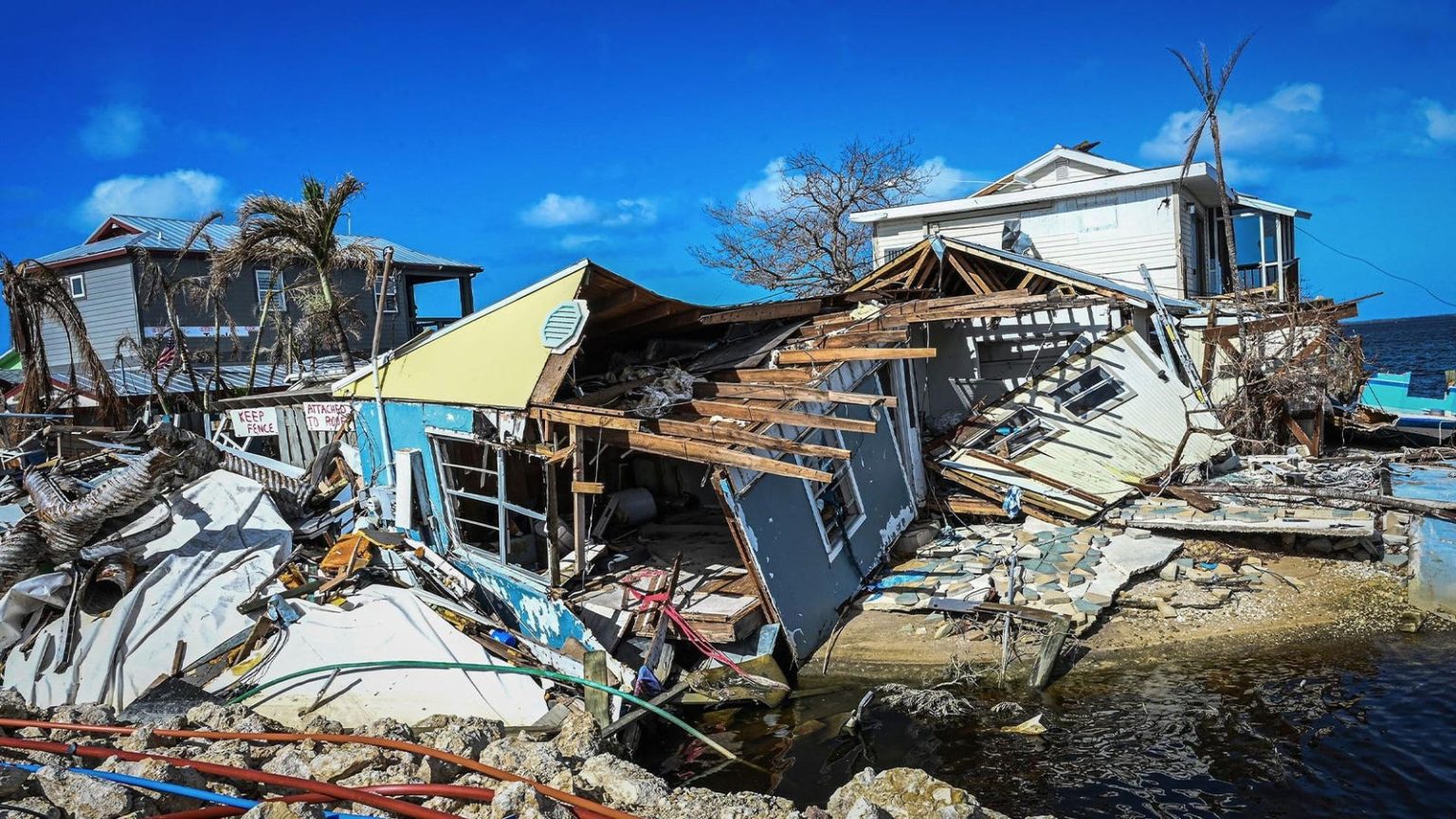Catastrophe bonds were the best performing alternative asset class in 2023, up 20%. A new ETF is coming, but its success depends on the weather.
By Brandon Kochkodin,Forbes Staff
The forecast is grim.
The National Oceanic and Atmospheric Administration predicts an 85% chance for an intense hurricane season, with up to 13 of the storms and as many as six reaching Category 3 status or higher. The U.S. has already felt the sting with Tropical Storm Alberto and Hurricane Beryl, the latter wreaking havoc in Houston as a “mere” Category 1 in July. Damage estimates for Beryl are already soaring past $30 billion, with the tab for privately insured losses topping $2.7 billion, according to Karen Clark & Co., a Boston-based company that models damages from catastrophic events. Hurricane season, which runs through September, is just heating up.
Yet the appetite for investing in catastrophe bonds remains strong—hardly a surprise given their performance. These bonds allow insurers to hedge against the financial impact of natural disasters, while offering investors a chance to earn robust returns, provided those disasters don’t surpass certain claim damage thresholds. Last year, catastrophe bonds delivered a 20% return, the best performance among any alternative asset class. It was double that of the average hedge fund, twice that of timberland investments, and four times the gains from private equity buyout funds, according to data from the Chartered Alternative Investment Analyst Association. With a first-of-its-kind ETF on the horizon, tapping into these high-yield bonds is about to become simpler than ever.
On July 12th, Brookmont Capital Management, a Dallas-based investment manager overseeing $942 million in assets, filed a prospectus with the Securities and Exchange Commission for a Catastrophic Bond exchange-traded fund. The proposed ticker, though it could change, is ROAR, which echoes the fury of a hurricane or tornado. According to the filing, the fund will be actively managed, with at least 80% of its net assets invested in catastrophe bonds and other insurance-linked securities. The prospectus outlines not only the typical credit risks—such as default, interest rate fluctuations, and prepayment—but also specific hazards including earthquakes in California, typhoons in Japan, and European windstorms. The fund’s fees and expenses weren’t disclosed.
Ethan Powell, Brookmont’s chief investment officer, says he’s been thinking of launching a catastrophe bond ETF for a decade. He bought the bonds for portfolios he managed at Highland Capital Management, but it was difficult to be diversified. “We’d buy four or five cat bonds and if one of them would get impaired, you’d be screwed,” Powell says.
The answer he was looking for was an ETF that would handle the diversification for him. And although Powell notes that Brookmont is primarily targeting institutional clients, he anticipates that the ETF will get picked up by a few retail brokers, too. He says the goal is to gather at least $200 million in assets within the first year after the expected September 25th launch.
Catastrophe bonds came about after Hurricane Andrew, a Category 5 storm, devastated South Florida in 1992, says Robert Hartwig, the director of the Risk and Uncertainty Management Center, at the University of South Carolina. According to a 2021 report from Neuberger Berman, Andrew’s economic impact exceeded $15.5 billion in insurance losses and drove at least 16 insurers into bankruptcy. Afterwards, regulators and rating agencies pushed insurers to bulk up their capital reserves. Typically, insurers would raise this money by selling equity, but that approach seemed inefficient—why permanently give up part of your company for money that might only be needed for a once-in-a-lifetime disaster?
Instead, insurers turned to the credit markets. By offering rates comparable to those of junk bonds, they could borrow to meet the stricter capital requirements while shifting some of the most extreme risks off their books. The arrangement is straightforward: catastrophe bonds are backed by insurers who usually have solid credit ratings, so investors don’t worry much about repayment. The high yields aren’t a reflection of the insurers’ likelihood to default, but rather a premium paid for transferring the risk of rare, catastrophic events. Investors essentially share the unease whenever a major storm looms.
Here’s a straightforward example of how catastrophe bonds work, from a 2018 Federal Reserve Bank of Chicago primer.
In 2010, American Family Mutual Insurance Co., a Madison, Wisconsin based insurer that primarily operates in the Midwest, wanted to hedge its exposure to thunderstorms and tornadoes. The insurer wanted $100 million of backing from investors in the case that total industry losses tied to the storms exceeded $825 million over a three-year period.
A special purpose vehicle, in this case called Mariah Re Ltd., was set up to issue the bond and hold the proceeds. Investors funded the bond by providing $100 million, putting the bond buyers on the hook for every dollar of losses above $825 million, up to $925 million. The $100 million was held by Mariah Re who then invested it in a U.S. Treasury money market fund. Mariah Re was then also paid 6.25% annually over three years by American Family. Interest from the Treasury money market fund and the 6.25% paid on the bond were passed along to investors.
Here’s the risk investors faced: If damages exceeded $925 million, they would lose their entire $100 million principal. For damages between $825 million and $925 million, investors would incur partial losses, receiving back less than their full initial investment on a dollar-for-dollar basis. Meaning that if the total economic impact was below $825 million throughout the term, they would get their entire $100 million principal back at the end—on top of all the interest they earned along the way.
Unfortunately, 2011 saw an outbreak of tornadoes that ravaged the Southeast and Midwest. Industry wide damages totaled $954.6 million, $129.6 million more than the $825 million threshold point, wiping out the full $100 million of the bond’s principal.
If finance has one fundamental purpose, it’s precisely this—to distribute risk. “You can’t really understand finance unless you fundamentally understand it’s a discipline for measuring risk and the returns on risk,” says Hartwig.
Catastrophe bond buyers gain something extra though on top of the high income stream, which partly explains why the asset class is favored by the savviest of investors: uncorrelated returns, the holy grail of diversification. Unlike stocks and/or regular old bonds, the performance of catastrophe bonds isn’t tied to economic cycles or market fluctuations. Hurricanes, earthquakes, and other disasters, thankfully, operate independently of the stock market. Including these bonds in a portfolio offers genuine diversification, potentially providing stability even when markets tumble, as seen in 2008 and 2020, when the asset class gained 2.45% and 5.81%, respectively, the Swiss Re Cat Bond Index shows. That same index has had just one down year since 2002—a modest 2.15% drop in 2022, when Hurricane Ian leveled Southwest Florida causing an estimated $112 billion in damages, according to NOAA.
Powell attributes that winning record to the fact that catastrophe bonds pay yields in the “mid to high teens,” while the expected loss rate for a broad portfolio is just “two to three percent.” Add it up and what you get is a high yield income stream with an investment grade profile.
One reason for the discrepancy in returns, Powell explains, is what he calls “the literal and figurative lightning risk.” A diligent junk bond investor at least has a chance to predict a company’s bankruptcy in advance, giving them a chance to sell before a default. That’s not the case with catastrophe bonds. By the time a hurricane is forecast or a tornado touches down, it’s already too late to retreat.
However, investors in catastrophe bonds aren’t automatically at risk when a natural disaster occurs. Hartwig explains that most bonds only require a payout if insurers’ losses exceed a predetermined threshold. Less frequently, a bond might pay out based on specific criteria being met, such as “if a hurricane is a named storm, makes landfall within a certain radius, and the damages occur within a specified timeframe,” he says.
Since their inception, the market for catastrophe bonds has grown significantly, with $47.4 billion outstanding today, according to Artemis, a leading trade publication. The momentum is accelerating. Artemis’ data shows that $12.7 billion worth of the bonds have been issued so far this year, putting them on track to shatter the full-year record of $16.4 billion set in 2023.
Until now, if you wanted to invest in catastrophe bonds, your options were fairly limited. You could go through mutual funds, provided you have access to them—such as Stone Ridge’s High Yield Reinsurance Risk Premium fund ($3 billion in assets under management), Ambassador EMPIX ($267 million), or the Pioneer Cat Bond fund ($348 million)—or manage it through private wealth accounts that would either buy the mutual funds, hedge fund strategies that do, or the bonds themselves. Both paths work, but they’re not as simple and straightforward as an ETF. Mutual funds come with higher fees and you can only buy or sell at the end of the trading day. An ETF, on the other hand, trades like a stock, with real-time pricing and generally lower fees.
It’s easy to see the appeal for such an ETF, but the absence of one until now raises questions. When the prospectus emerged, some prominent figures in the ETF industry were quick to probe its feasibility. Meb Faber, the CEO of Cambria Funds, posted on X that he was “very curious to see how they do this as [catastrophe bonds are a] notoriously illiquid asset.” Similarly, Wes Gray, the CEO of Alpha Architect, was skeptical, asking, “Seriously. Who signed up to be the market maker on that deal???” The problem is straightforward: as Faber pointed out, catastrophe bonds are famously hard to buy and sell quickly, while ETFs need to be able to quickly acquire and dispose of assets.
“The biggest issue with liquidity isn’t selling,” Powell responds. “It’s finding the paper to source.”
To tackle this, Powell says that Brookmont is partnering with a sub-advisor who is well-established in the catastrophe bond space and skilled at securing deal flow, though he isn’t ready to disclose their identity just yet. Furthermore, the Brookmont prospectus shows that the fund can invest in a variety of related instruments, including other insurance-linked securities and even insurers’ corporate bonds. Powell explains that these investments will serve as a bridge, giving investors the immediate, if imperfect, exposure they’re looking for until Brookmont can get its hands on actual catastrophe bonds.
The University of South Carolina’s Hartwig believes now may be the right time for a catastrophe bond ETF. He notes the market is expanding quickly and points out that today’s investors, familiar with even more “esoteric investments” like cryptocurrencies, can appreciate the unique portfolio diversification the asset class offers. However, he cautions prospective buyers to scrutinize the ETF’s holdings “with a fine-tooth comb” upon release, ensuring there’s not excessive exposure to specific events or regions. He adds that investors should also be prepared for the ETF’s price to “fluctuate with the weather.”
If approved, the ETF will start trading on September 25th—a date that Brookmont’s Powell acknowledges isn’t a coincidence. It lands right at the tail end of hurricane season.
MORE FROM FORBES
Read the full article here
















